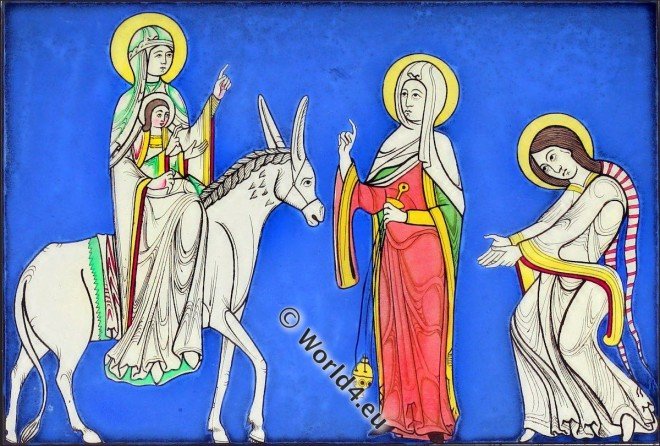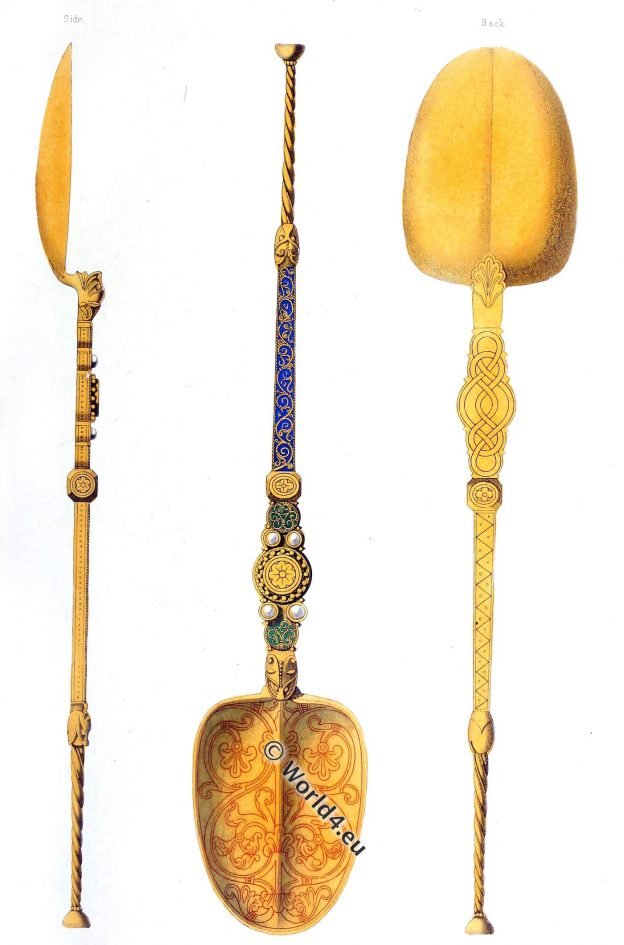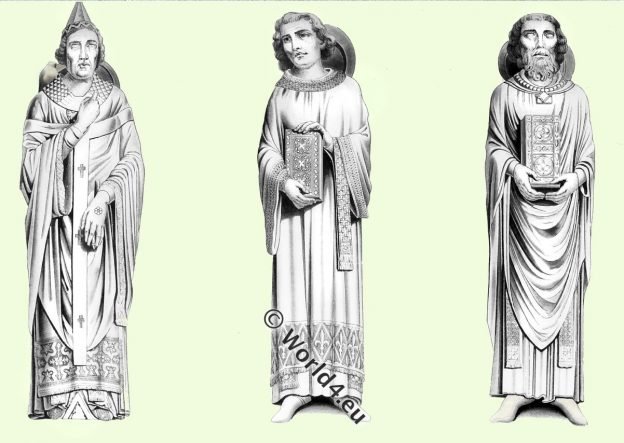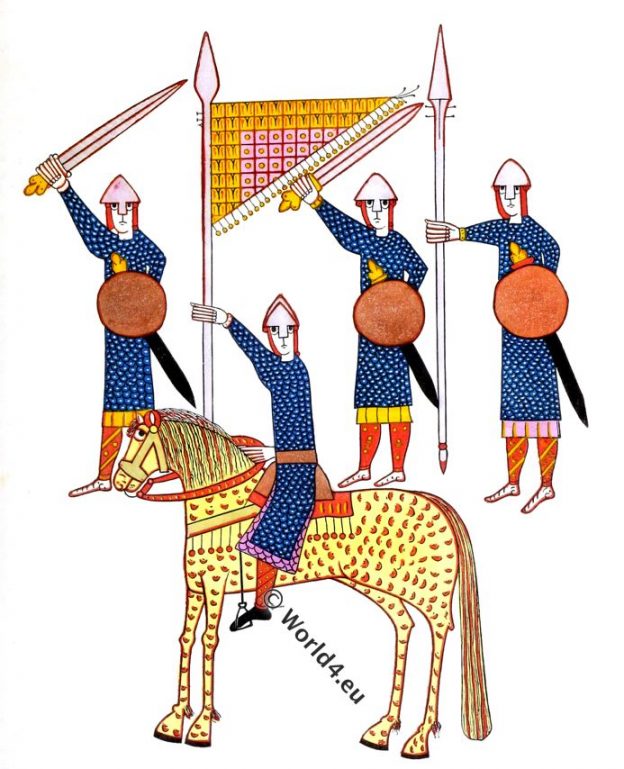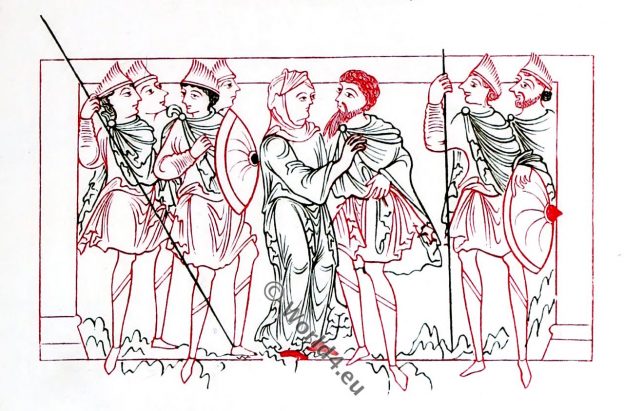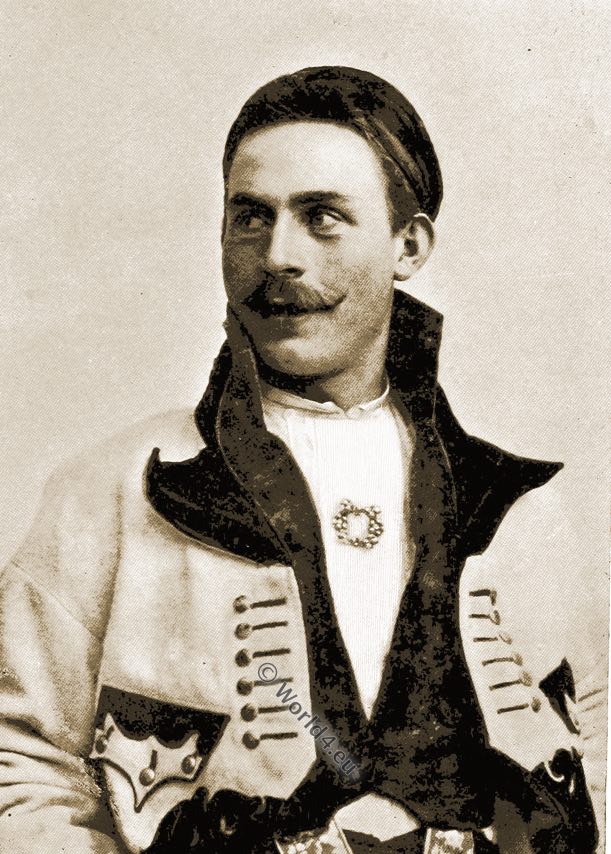Anjou-Plantagenêt ruling dynasty of medieval England
Category: Europe
Fashions in Europe. European Costume and Cultural History.
Geoffrey Chaucer. English writer and poet.
DAN Chaucer, as he is termed by some of our older writers, is the popular representative of the earlier period of English poetry; indeed he may be considered The Poet, par excellence, of the English Middle Ages.
Ladies fashion of the 12th century. Virgin Mary. Anglo-Norman servants.
These figures present interesting examples of the female costume among our ancestors in the first half of the twelfth century. Illuminations of the Cottonian Manuscript Nero C. IV.
Coronation spoon of English monarchs. 12th century.
Coronation spoon of English monarchs.
Ecclesiastics of the 12th century. Bishop, monks.
Figures of prelates from a early Anglo-Norman version of the Psalter, in MS. Cotton, Nero C. IV., in the British Museum.
Figures of Ecclesiastics of the cathedral of Chartres.
The Cathedral of Chartres, founded in the earliest times of Christianity in the west, is remarkable for the many misfortunes it has sustained.
Spanish warriors, jongleurs, minstrels in the 11th century.
The figures which form our plate represent Spanish warriors of the latter part of the eleventh century, and are interesting on account of their remarkable resemblance to the Anglo-Norman soldiers on the celebrated Bayeaux Tapestry.
Illustrations of Prudentius. Anglo-Saxon civil and military costume.
Prudentius is the most important Christian poet of late antiquity. Prudentius was very popular in the Middle Ages. There are more than 300 manuscripts, the oldest one from the 6th century.
Mountaineer. Traditional Norway costume in 1896.
A Mountaineer. Traditional Norway costume in 1896.
The Black Prince. Edward of Woodstock, Prince of Wales.
The portrait was probably made about the time of the battle of Poitiers



